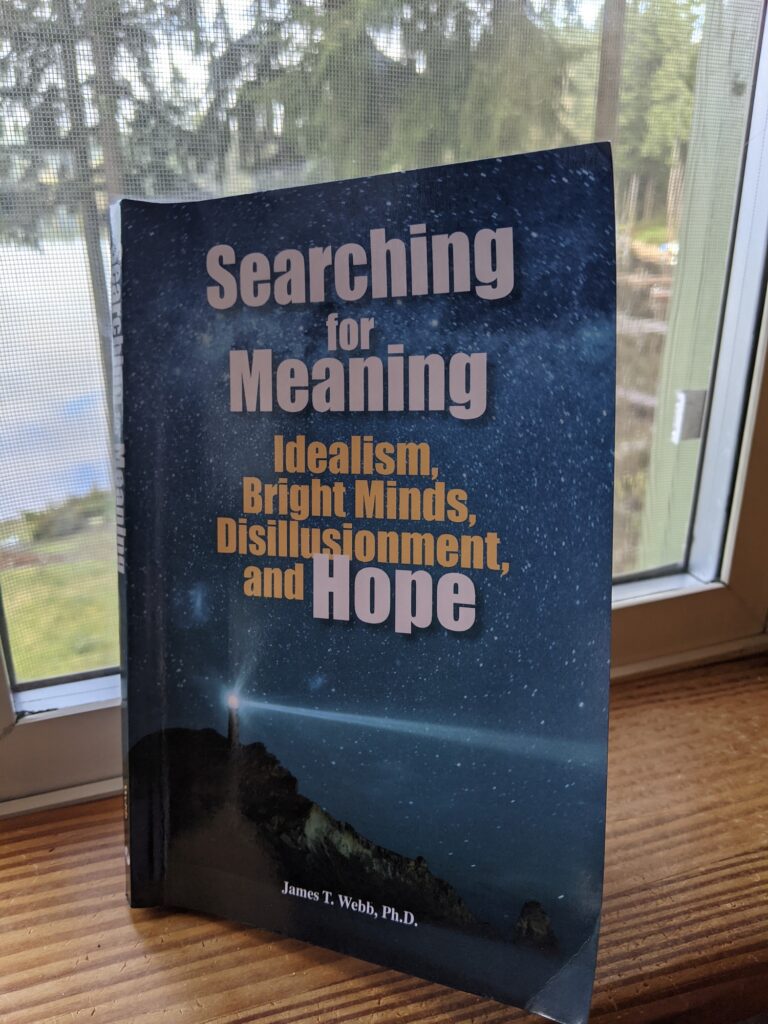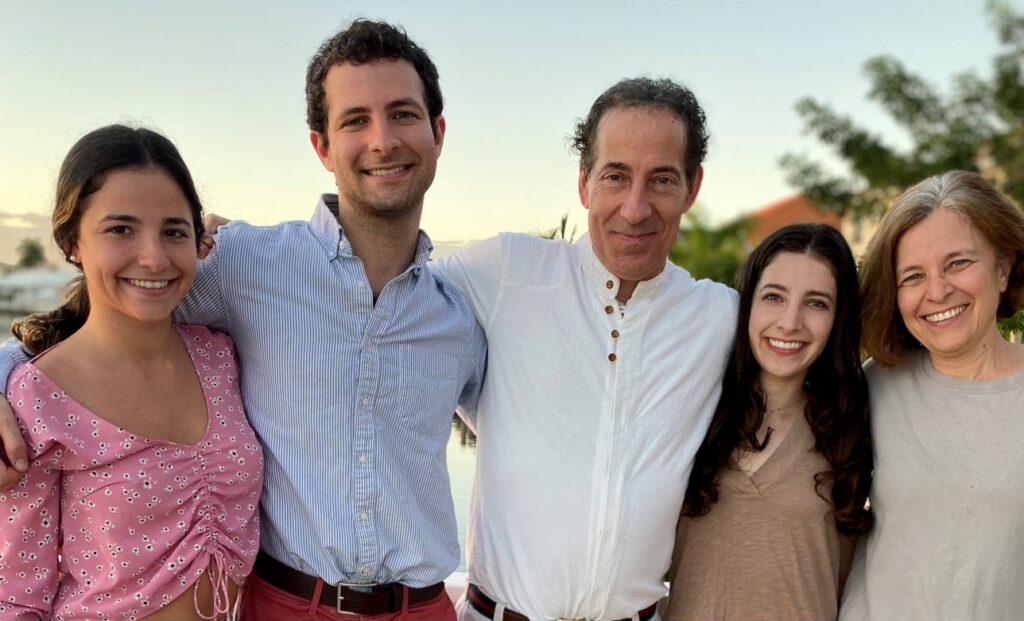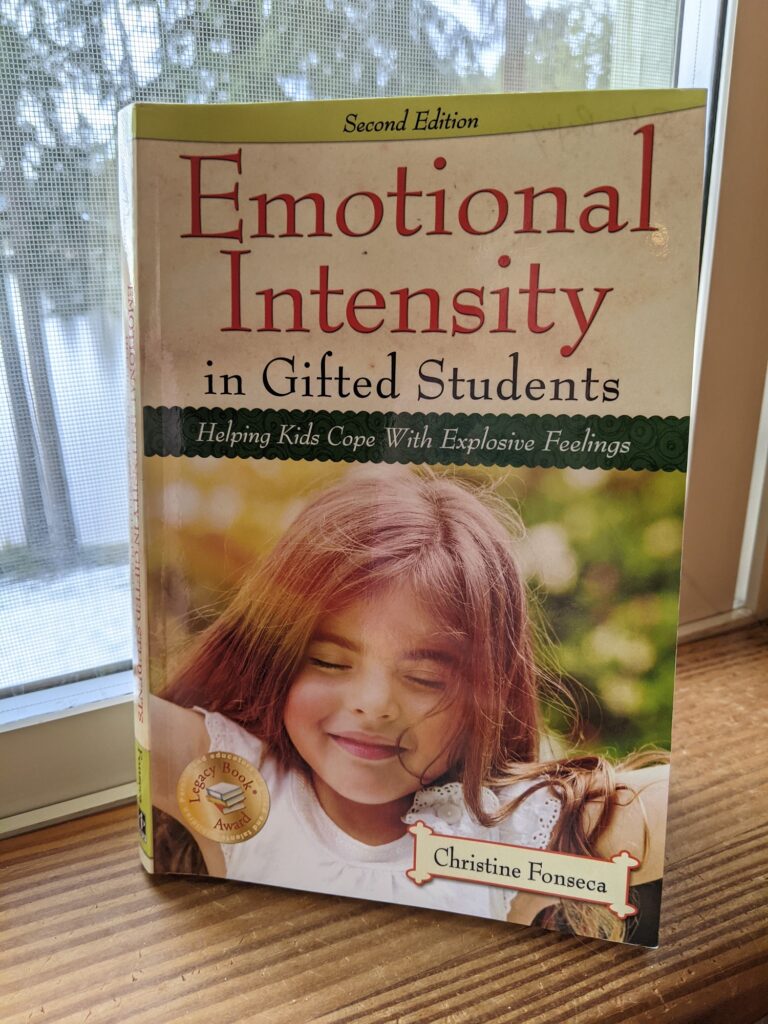
“Among bright and caring people, disillusionment is not rare, and it can lead to feelings of despair and aloneness” (p. 9).
For my fifth Book Reflections overview, I’ll be discussing my thoughts on James T. Webb’s Searching for Meaning: Idealism, Bright Minds, Disillusionment, and Hope (2015). Dr. Webb, who passed away in 2018, is well-known in gifted circles as the founder of SENG and co-author of A Parent’s Guide to Gifted Children (2007). As described by Austina De Bonte (former President of the Northwest Gifted Child Association) in her August 2018 newsletter:
[Jim Webb] was a truly remarkable person – the spiritual leader of many in the gifted community, and the kindest, most welcoming soul I’ve ever had the pleasure of knowing. [He] founded SENGifted.org, wrote some of the most important books in the field, started the “Misdiagnosis and Missed Diagnosis” initiative, and was extremely generous with his time, speaking often at conferences and in various communities – including a west coast tour last spring that included several stops in our area. Jim‘s work dramatically increased the awareness and support of the emotional needs of gifted individuals – and his legacy invites each of us to carry on and do our part in continuing this vital mission.
Like Austina, I am deeply grateful to Dr. Webb on so many fronts – and I write this blog post with keen appreciation and happiness that he was able to pass along his values and ideas through this book, as part of his own “ethical will” (a concept he proposes and discusses in Chapter 8).
I’ll begin with a brief overview of how this book is structured. [The teacher in me likes to prep readers for what’s to come…]
In Chapter 1 (“Searching for Meaning”), Webb provides a succinct overview of key ideas from his book. He then moves directly into discussing idealism and illusions in Chapter 2 (“Idealism: Do You Get it From Your Parents, or Does it Just Come Naturally?”), and in Chapter 3 (“Bright and Inquiring Minds Want to Know!”) he describes how and why gifted individuals are more likely to be idealists who become disillusioned.
Webb turns to the “heavy topic” of depression and despair in Chapter 4 (“Gloom and Misery and Despair: So Much Depression Everywhere”), which I’ll only touch on briefly here, but will return to in a future blog post given how much there is to say on this topic. He shifts to “personal meaning” in Chapter 5 (“Life Meaning and Existential Concerns”), and in Chapter 6 (“Awareness and Acceptance”) he addresses life stages (covered in further depth in Ellen Fiedler’s subsequent Bright Adults [2015]).
In Chapters 7 and 8 (“Some Not-So-Healthy Coping Styles that Feed Illusions” and “Healthier Coping Styles that Go Beyond Illusions”), Webb discusses the variety of ways in which we tend to cope with disillusionment and despair – some less helpful, some more helpful, and some dangerous. Webb wraps his book up in Chapter 9 (“Hope, Happiness, and Contentment”) by reminding us that he can’t provide us with answers, but can hopefully provide a framework for our own unique journey towards a life of personal meaning.
Webb’s book – written from both a personal and professional stance in his own life – was a straightforward and useful read for me, neatly summarizing many key ideas I’ve incorporated over the years from various sources (many of which Webb cites). As someone who’s spent decades searching for meaning, managing my idealism and disillusionment, and finally emerging in recent years with tentative hope (albeit intermingled with ongoing questioning and challenges), I was gratified to see that the unwieldy paths I’ve followed seem to map onto Dr. Webb’s recommendations. I’m grateful to have an invaluable resource (this book) to recommend to those in the midst of crippling confusion and despair (as I once was – many times), and I appreciate Webb’s validation that none of us will ever be “done” with existential despair. Instead, it’s something we must learn to live with.
Below, I’ll briefly share just a few of the key ideas and quotes that stood out to me from each chapter of Webb’s book:
Chapter 1: “When metacognition is combined with idealism, intensity, and sensitivity, it often results in people feeling separated from the world around them” (p. 15).
This powerful quote stood out to me instantly as I started reading Webb’s book. I’ve used the terms “disembodied” and “dissociated” to describe how I’ve felt at times when I’ve (metaphorically) looked down at myself and wondered who I am, what I’m doing, and what the point of it all is. Existential musings and concerns have been an inextricable component of my life from a very early age – and I hear similar echoes in statements from my three gifted kids. My 8 year old daughter I., for instance, mused out loud the other day while doing schoolwork: “I wonder how life happened? I wonder how my hand is moving?” And during read-aloud time at night, my 10 year old son D. has said to me numerous times, “I keep waiting for the book that will show us this is all a dream we’re going to wake up from one day.” He says this with bemusement and wonder rather than distress, though I anticipate this might change as he gets older; we’ll see.
Chapter 2: “We create illusions and beliefs about things that we cannot see, prove, nor disprove… ‘Fictional finalisms’ . . . are part of our idealism [and] lessen our anxiety because they help us feel more in control of our world and of things we do not understand” (p. 31).
I appreciate Webb’s mentioning of the term fictional finalisms (coined by psychotherapist Alfred Adler), since this acknowledges humans’ need to create illusions that we can hold on to for security – as well as the challenges that emerge when said illusions are questioned and/or confronted. I can recall many such instances in my own life, each filled with just as much pain and anguish as Webb outlines in his book. It’s not easy to confront and overcome “convenient fictions”, but it’s also often inevitable. This topic merits numerous additional blog posts in the future, so I’ll leave it at this for now.
Chapter 3: “Not surprisingly, bright minds are usually also high achievers. These individuals set goals and want to succeed at things that give their lives meaning and that satisfy the questions ‘Why am I here?’ and ‘What is my purpose?’ But therein lies a problem. Achievement in what? Should they try to reach their potential in all of the areas they’re involved in? What really is success?” (p. 56)
Here, Webb accurately identifies the stickiest of challenges facing many gifted individuals: the meta-questioning behind our strivings. Even once we determine our next goal, there’s no guarantee we won’t question the “veracity” of that, too. This leads me to the quote I selected from the following chapter…
Chapter 4: “Even when [gifted individuals] make progress toward a goal, they focus on what is still left to do. Their idealism prompts them to engage in ‘goal vaulting’. That is, they set a goal, but then when they get close to achieving it, they vault over it and set a new and loftier goal, meanwhile forgetting that they have accomplished the original goal they set for themselves. They continually raise the bar on their level of aspiration” (p. 73).
In a recent episode of Emily Kircher-Morris’s “Neurodiversity Podcast“ (formerly known as the “Mind Matters Podcast”), she talks with a doctoral student researching “imposterism” (a.k.a. “imposter syndrome”), and during their talk, Webb’s concept of goal vaulting is referenced. I’ve been doing this my entire life without realizing it has a name. I received my doctoral degree in 2007 and immediately thought, “Okay, that’s done – now what? Where’s the coveted professorship I’m supposed to embark on next?” Goal vaulting is a bedeviling tendency – one that never allows a person to rest or celebrate (at least for long).
Chapter 5: “Why does the universe go to all the bother of existing?” (Stephen Hawking, p. 87)
In Chapter 5, Webb argues that while “most people seem… reasonably content in life” (are they? I’ll have to trust him on this one), gifted individuals must decide:
“How will we choose to spend the time we have in this life in ways that matter to us?” (p. 88).
When our “intensity is combined with multipotentiality” (that is, “brightness in several areas”), gifted individuals “… may become frustrated with the existential limitations of space and time… They have to make choices, but the choices among so many possibilities feel unfair because they seem arbitrary; there is no ‘ultimately right’ choice” (p. 98).
Again, this circles back to meta-questions of ultimate “authority” and “correctness”. Without fictional finalisms to rely on, we must determine alternative methods for making peace with our choices.
Chapter 6: In this chapter, Webb discusses Vince Sweeney and Andrew Mahoney’s “Awareness Model”, consisting of the following As: Awareness, Acknowledgment, Appreciation, and Acceptance.
“Once you stop denying the differences that exist between yourself and others, you can appreciate your abilities. You also may find that you appreciate the uniqueness of others…” (p. 119).
The “four As” of the Awareness model sound deceptively simplistic. In reality, each of these critical stages can take years to address, but can also help move a gifted individual closer to happiness, peace, and meaningful contributions to society.
I understand at least part of the 4 As process as follows: the inherent “narcissism” of childhood must eventually be overcome (in a completely developmentally appropriate fashion) in order to recognize that our own “lived reality” isn’t universal, and that we can (and should/must) learn to get along with a diverse array of humans while maintaining integrity of our own complex identity. (Here I use the term “integrity” in the sense of keeping one’s sense of self intact rather than descending into permanent disintegration – a concept discussed by Kazimierz Dabrowski, and covered briefly by Webb in Chapter 5, where I humbly refer the reader for more detailed information.)
Chapter 7: “Some individuals avoid facing difficult personal issues by keeping busy. Their inner voice tells them, If I stay frantically busy, then I don’t have time to think about life or about the meaning of my behaviors” (p. 132).
There are many strategies used by bright individuals to keep the demons of disillusionment at bay. Webb names the following twelve:
1) insisting on knowing The Truth; 2) “trying to control life, or at least label it”; 3) “keeping busy”; 4) “deliberately not thinking and using distractions”; 5) “clinging to things”; 6) “becoming narcissistic”; 7) “learning to not care”; 8) “numbing your mind”; 9) “seeking novelty and adrenaline rushes”; 10) “camouflaging to keep others from knowing you and your ideals”; 11) “withdrawal and detachment”; and 12) “anger”.
Keeping (overly) busy (#3) is one way I coped with existential angst as a teenager – though I eventually (inevitably) crashed and burned into #11 (more specifically, I dropped out of school and couldn’t figure out what to do next). Paralysis – either from too many choices, or from intense self-doubt about one’s ultimate efficacy and value to the world – must be addressed and overcome in order for gifted individuals to thrive… Which leads to the following chapter.
Chapter 8: Here, Webb offers numerous positive strategies for dealing with disillusionment, including the following:
“creating your own life script”, “becoming involved in causes”, “using bibliotherapy and journaling”, “maintaining a sense of humor”, “touching and feeling connected”, “developing authentic relationships”, “compartmentalizing”, “letting go”, “living in the present moment”, “learning optimism and resiliency”, “focusing on the continuity of generations”, “mentoring and teaching”, and “rippling”.
These are all excellent strategies – ones I’ve dabbled with and found solace in over the years – but the final strategy (‘rippling’) merits further mention. Webb writes that rippling – that is, the influence of one’s life rippling “out widely to affect the lives of people”, many of whom you don’t know –
“… is one of the most powerful realizations that can help people manage their idealism and even their disillusionment… Each of us, during our lives, creates ripples that have the potential to spread far…” (pp. 159-160).
I’ll return to the topic of ‘rippling’ in a future blog post.
Chapter 9: “Choose what you want out of your life and start working your way there… You may be concerned that your direction is not the best one or the perfect one for you, or you may doubt that it really has any ultimate meaning. Even so, make a decision to engage in something that seems meaningful to you or to others… The research indicates that making a decision will increase the likelihood that you will experience a sense of contentment, happiness, and hope” (p. 164).
For better and/or for worse, existential angst and questioning are an integral part of many gifted adults’ existence – nonetheless, we must make choices.
Finally, Webb posits that “people who are best able to maintain hope – and their idealism” in the midst of “unhappy or disturbing truths” are:
“… those who have been emotionally supported along the way in their lives, who are able to connect to other idealists, and who have learned how to be resilient in the face of disappointment and failure” (p. 26).
These are powerful words to end on (for now). Support, connection, and resilience are key. Let’s make sure we continue to promote these, even through the most challenging of times.
References:
- Webb, J.T. (2015). Searching for Meaning: Idealism, Bright Minds, Disillusionment, and Hope. Great Potential Press.
Copyright © 2021 by HalfoftheTruth.org. Please feel free to share with attribution.



